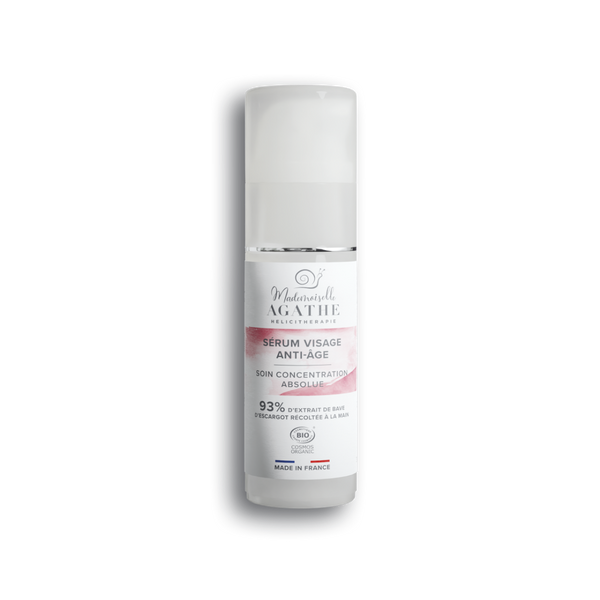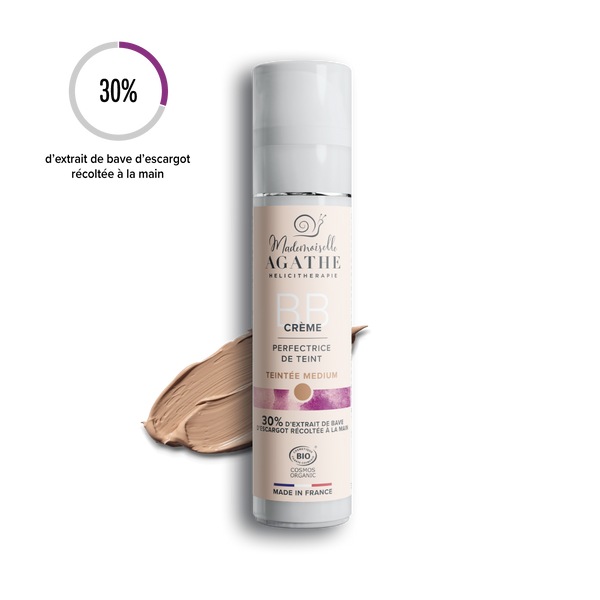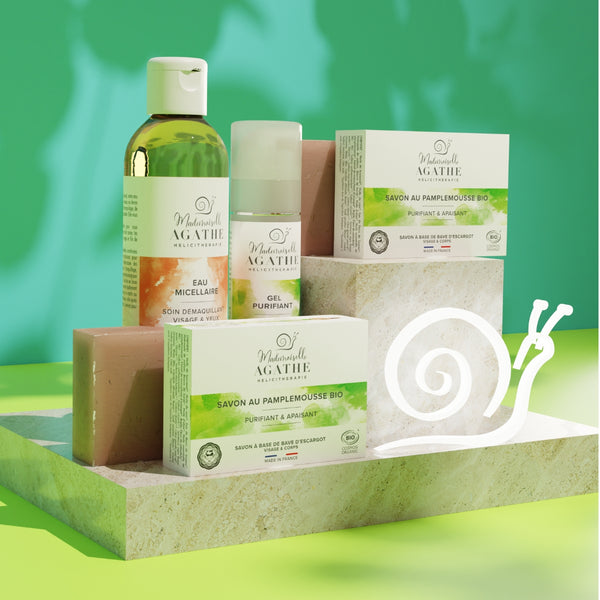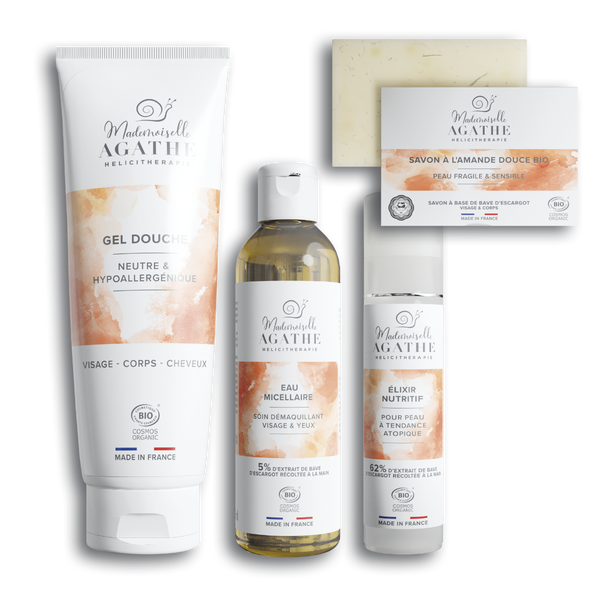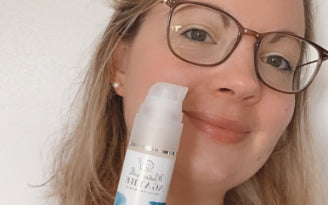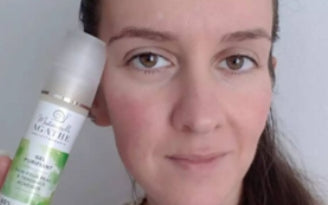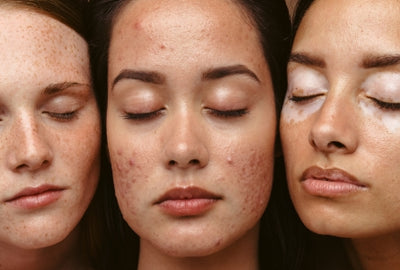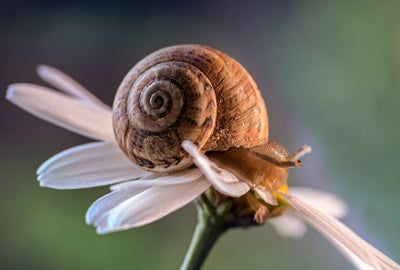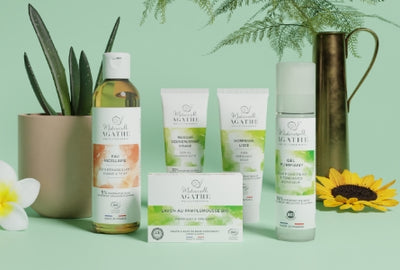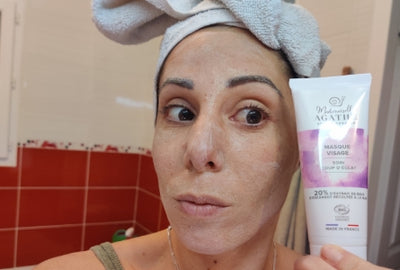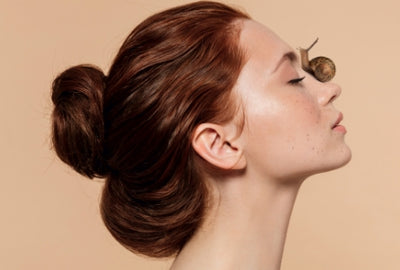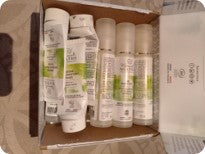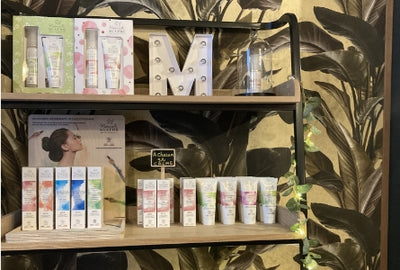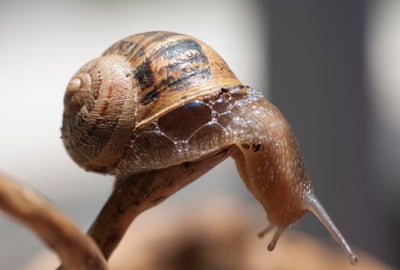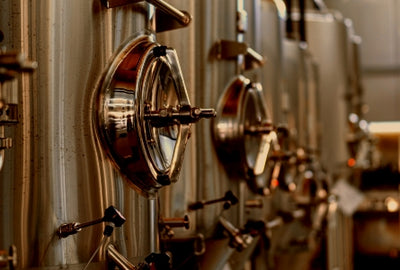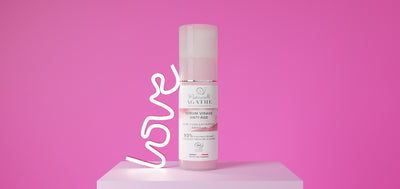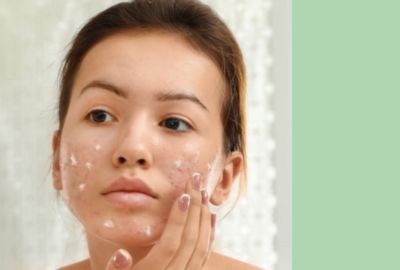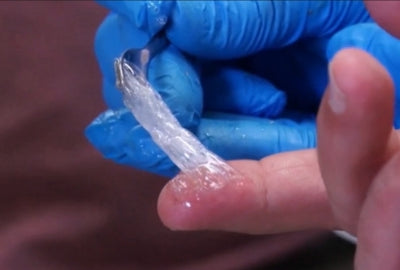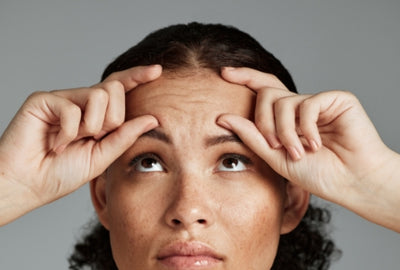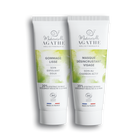
SHOULD YOU BELIEVE IN THE BENEFITS OF SNAIL SLIME IN COSMETICS?
The first traces of the use of snail slime for medicinal and cosmetic purposes date back to antiquity. Hippocrates, the father of modern medicine, recommended the use of snail slime to treat wounds and inflammations of the skin. (Garcia, 1999)[1]
This brief historical reminder of the therapeutic use of snail slime shows that beyond empirical preparations based on snail, real scientific work has been carried out on the pharmacological actions of snail slime and a a large number of biological and therapeutic properties have been demonstrated.
It has even been shown that the active substances present in the mucus of snails make it a unique natural product that cannot be reproduced in the laboratory with synthetic chemical compounds. (Trapella et al., 2018)[2]
Thanks to more than 10 years of research and innovation, Mademoiselle Agathe has created Helicitherapy.
To date, we have carried out around ten scientific studies with the Museum of Natural History in Paris, the University of Rouen, and other research laboratories which have enabled us to identify more than a hundred proteins, peptides, vitamins, and other natural antibiotics in our snail slime extract . (Marie A et Al. 2019)[3]
We are also far from being the only ones to have done extensive research on the mucus of Helix aspersa. And all this research has found multiple applications in the cosmetic and health fields around the world thanks to its various scientifically proven pharmacological properties. (Iguchi et al. 1982 [4]; Shah et al. 2012[5]; Zizioli et al. 2022[6]).
What the scientific literature teaches us is that to produce their effects in the body at the skin level, the different active molecules present in snail slime act in synergy. It is therefore the cosmetic, but also pharmaceutical and medical activity of snail mucus that we have traced here:
EXFOLIATING AND REGENERATING PROPERTIES
(Adikwu et al. 2008[7]; El Mubarak et al., 2013[8]; Liudmyla et al., 2022[9])
MOISTURIZING PROPERTIES
(Gentili et al. 2020[10]; Truchuelo et al. 2020[11])
ANTI-AGING PROPERTIES ,
(Arora, 2021[12]; Cristiano et al. 2022[13]; Liudmyla et al. 2022[14]; Laneri et al. 2019[15]; Tsakanova et al. 2021[16])
ANTIMICROBIAL PROPERTIES,
(Dwek MV et al. 2001 [17]; Noothuan N. et al. 2021 [18]; Ulagesan et al. 2018 [19]; Zhong et al. 2013[20]; Pitt et al. 2015 [21] )
ANTI-INFLAMMATORY PROPERTIES,
(Gugliandolo, Macri et al. 2021[22]; Naruke et al. 2021[23]; Nakajima et al. 2014[24])
RESTORATIVE PROPERTIES,
(Greistorfer et al. 2017[25]; Pitt SJ et al. 2015[26]; Tsoutsos et al. 2009[27])
ANTIALLERGIC PROPERTIES,
(Messina et al. 2022[28]);
HEALING AND ANGIOGENIC PROPERTIES,
(Gugliandolo et al. 2021[29]; Olczyk et al. 2014[30]
ANTIOXIDANT PROPERTIES,
(Cristiano et al. 2022[31])
Other properties which do not involve cosmetics but which are also interesting to know such as BRONCHO-RELAXING PROPERTIES,
(Pons et al., 1998[32])
And even more surprising properties: ANTITUMOR PROPERTIES,
(Ellijimi et al. 2018[33]; El Mubarak et al. 2013[34]; Trapella et al. 2018[35])
Who says better ?

The pharmacological and biological properties of snail slime.
It improves the elasticity and hydration of the skin
Snail mucus has exfoliating and regenerating properties thanks to the glycolic acid contained in its mucus. It helps remove dead skin cells, and thus helps reduce fine lines and wrinkles. The presence of mucopolysaccharide allows considerable hydrogen bonding with adjacent water molecules, which leads to efficient hydration of surrounding tissues. In addition, it stimulates the synthesis of hyaluronate, which leads to an increase in the water retention capacity and viscoelasticity of the skin (Gentili et al. 2020). When snail slime cream is used on the skin, the peptides are absorbed into the deeper layers where they can interact with the fibroblasts. The peptides bind to specific receptors on the fibroblast surface, triggering a cascade of events that ultimately lead to increased collagen production (Adikwu et al. 2008; Truchuelo et al. 2020).

It reduces wrinkles and fine lines
By improving the hydration and elasticity of the skin, snail slime via the synergy of these numerous bioactive molecules including glycolic acid, hemocyanin, actin, allantoin, elastin and collagen , helps reduce wrinkles, stretch marks, (Arora, 2021; Cristiano et al. 2022; Liudmyla et al. 2022 ) signs of photoaging of the skin and damage caused by free radicals. (Laneri et al. 2019; Tsakanova et al. 2021). Mucus also offers antioxidant activities, mucus antioxidants are substances that can protect cells from damage caused by unstable molecules known as free radicals or reactive oxygen species. These molecules (SOD & GST) act as antioxidants and protect cellular components against oxidation by reactive oxygen species. (Cristiano et al. 2022; Truchuelo et al. 2020).

It is antimicrobial and bacteriostatic
Several independent studies have shown the ability of snail extracts to act as immunostimulants and to possess antimicrobial, antifungal and antiviral activities. (Dwek MV et al. 2001; Noothuan N. et al. 2021; Ulagesan et al. 2018) The presence of antimicrobial activity in snail mucus has been reported as early as the 1980s. (Zhong et al. 2013 ) In 2015, scientists Pitt SJ and collaborators reported in a preclinical study published in the British Journal of Biomedical Science, the antimicrobial properties of mucus on several types of bacteria, including Staphylococcus aureus and Escherichia coli, including some resistant strains to antibiotics. The antibacterial properties of mucus are not attributed to a single peptide, but rather to a combination of several peptides. The "bacteriostatic" effect that we have demonstrated with the University of Rouen is ideal for improving acne-prone skin, because a stronger action called "bactericidal" would lead to the loss of the good bacteria also present on the skin.
The benefits of snail slime for acne-prone skin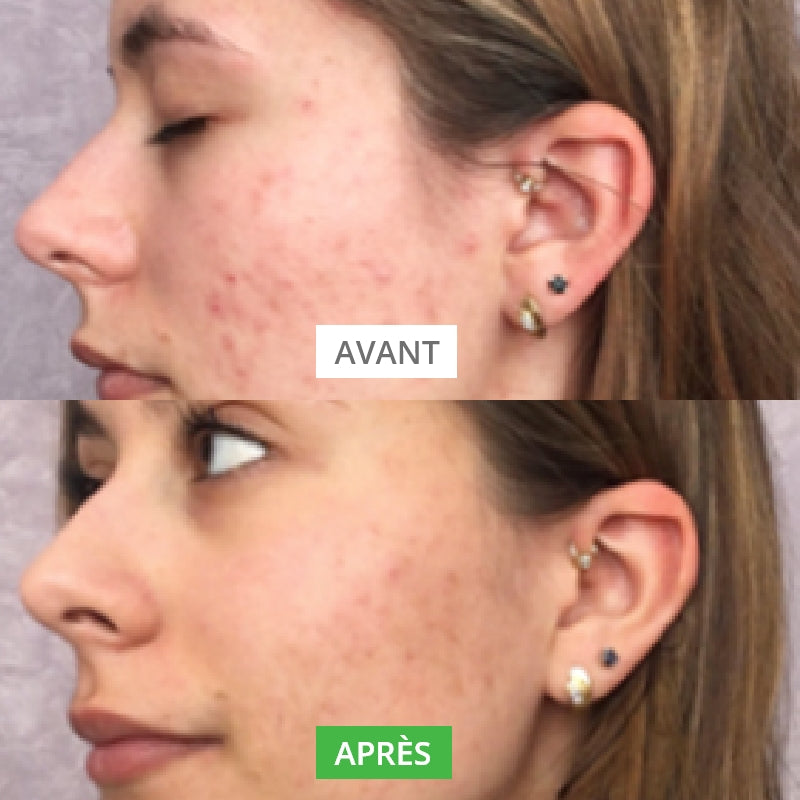
It boosts healing mechanisms
Wound healing is a physiological process comprising several coordinated phases, such as inflammation, proliferation and remodeling. Normally, the result of these well-coordinated sequential phases is complete wound healing with restoration of normal skin structure. However, in the presence of different pathological factors, such as an underlying disease state or infection, the wound can become chronic. The effectiveness of snail slime in healing wounds has been proven both in vitro and through clinical studies. Snail mucus accelerates wound healing by inducing the migration of fibroblasts and enhancing the expression of genes related to wound healing. Snail mucus further regulates a family of proteins called metalloproteinases (MMPs) which play a key role in all stages of the wound healing process by modifying the wound matrix. (Gugliandolo et al. 2021; Olczyk et al. 2014 )
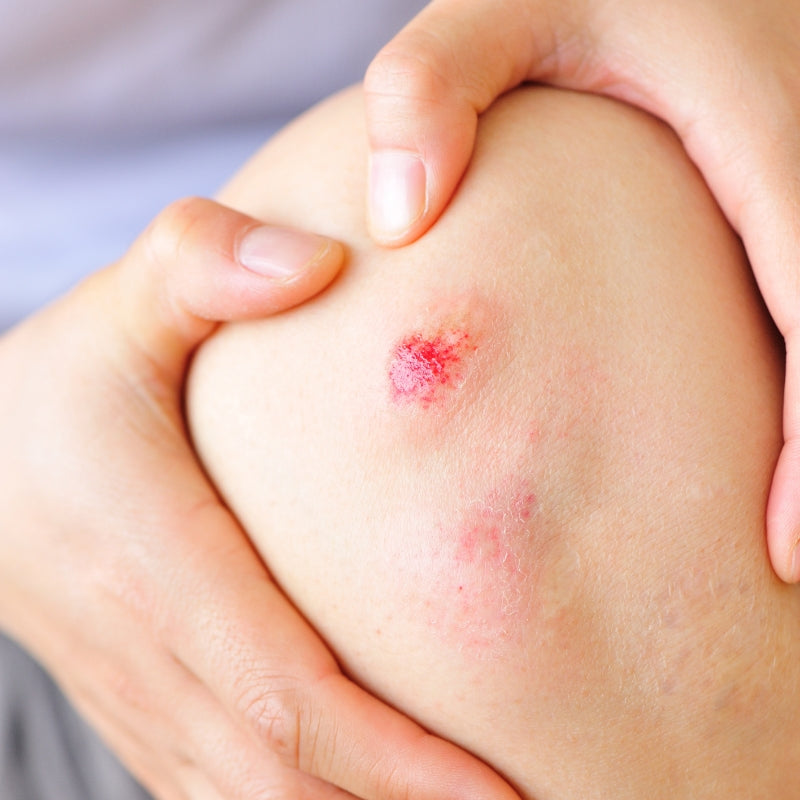
It reinforces the anti-inflammatory activity of the skin
In recent years, studies have shown that the slime secreted by the snail Helix aspersa Muller, has strong anti-inflammatory activity, (Gugliandolo, Macri et al. 2021; Gugliandolo, Cordaro et al. 2021; ). Snail slime is able to act as an antiallergic agent by significantly inhibiting pro-inflammatory cytokines (Naruke et al. 2021). Studies also demonstrate that mucus attenuates the development of skin inflammation (Nakajima et al. 2014). Snail mucus exerts its anti-inflammatory effect through different mechanisms. The combined action of different anti-inflammatory molecules contained in snail slime: Actin, Allantoin, peptides, enzymes, glycoproteins and amino acids. Antioxidants such as vitamin E, vitamin C and carotenoids neutralize free radicals that damage skin cells and trigger inflammation. Polysaccharides retain water and hydrate the skin, which helps reduce inflammation by preventing the skin from drying out. By combining these different components, snail slime can act synergistically to reduce inflammation and improve cell regeneration. (Messina et al. 2022)
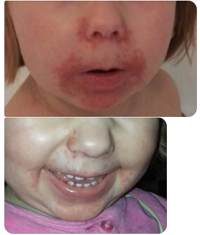
It increases the production of collagen and elastin
As we age, the production of collagen slows down, which will inexorably lead to wrinkles, the sagging of the very structure of the skin and other signs of aging. The snail slime proteins applied to the skin will be absorbed into the deepest layers where they can interact with the fibroblasts. The mucus extract will then stimulate cell renewal by increasing the production of type 1 and type 3 collagen and elastin. Which will slow the signs of aging, improve skin texture and appearance. (Adikwu et al. 2008).
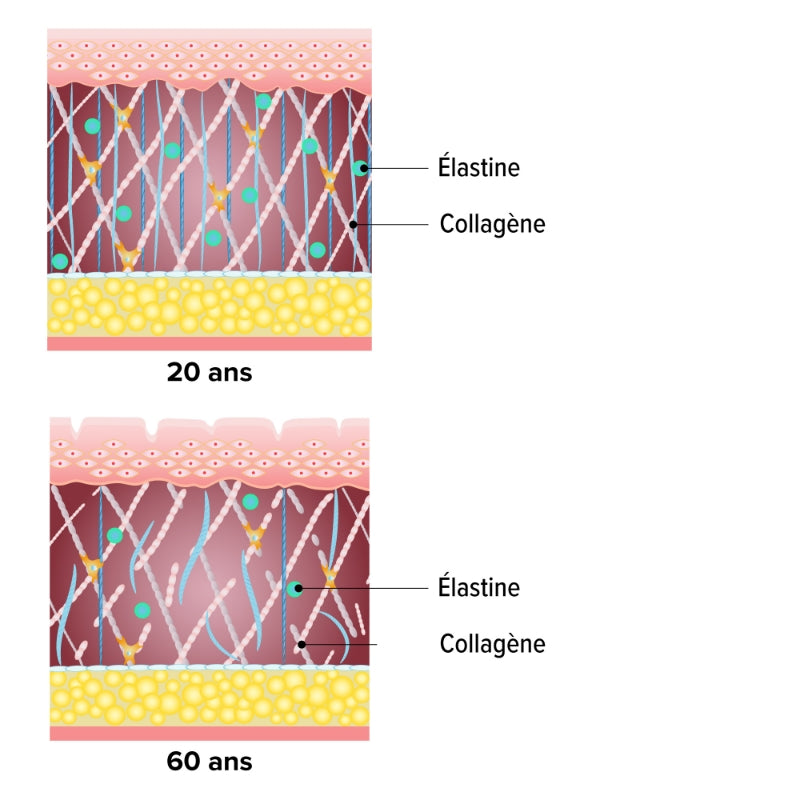
It stimulates the repair and regeneration of the skin
The keratolytic effect is based on the ability of bioactive mucus molecules to penetrate the epidermis, dissolve intercellular bonds and facilitate the exfoliation of dead skin cells. All metabolites in snail slime trigger a cascade of events to stimulate regeneration and produce new cells. By stimulating cell renewal it increases the production of collagen and elastin. Which improves the texture and appearance of the skin. (Adikwu et al. 2008). To produce its regenerative effects on the skin, mucus increases the migration and expression of cell-cell and cell-substrate adhesion molecules in fibroblasts and keratinocyte cells. (Liudmyla et al., 2022). Thanks to these characteristics, the mucus extracted from Helix aspersa Muller has been used successfully as a re-epithelialization treatment in the management of burns in adult patients (Tsoutsos et al. 2009)

It acts as an anti-pollution barrier
The presence of mucopolysaccharides, according to a 2020 study by Gentili, acts as a barrier to prevent attacks on epithelial cells by pollution. The presence of polyphenols could give mucus the ability to prevent and counter pollution-induced oxidative skin damage. Snail slime acts as an anti-pollution barrier to prevent premature aging of the skin. In this same study, the authors also argue that the topical use of mucus is a very good natural anti-pollution technology to prevent premature aging of the skin. (Gentili et al. 2020)

In conclusion, Helicitherapy operates thanks to the synergy of all the molecules present in snail slime. Despite the predominantly aqueous composition of mucus, all this scientific research confirms that it is precisely the harmonious interactions between proteins and secondary metabolites that give snail slime extract its broad spectrum of cosmetic activity. Don't miss the opportunity to take advantage of this unique synergy and give your skin the radiance it deserves with our treatments. It's not magic, it's helicotherapy!
Source :
[1] Garcia, R. (1999). Use of snail slime (Helix aspersa) as a cosmetic and healing agent. International Journal of Cosmetic Science, 21(5), 375-382.
[2] Trapella, C., Rizzo, R., Gallo, S. et al. HelixComplex snail mucus exhibits pro-survival, proliferative and pro-migration effects on mammalian fibroblasts. Sci Rep 8, 17665 (2018). https://doi.org/10.1038/s41598-018-35816-
[3] Marie A, Thebault P, Cosette P, Shmitz-Afonso I, Pierron F, Mass spectrometry and chromatography. (2018,2019,2020). https://www.mlle-agathe.fr/pages/nos-recherches-scientifiques
[4] Iguchi SM, Aikawa T., Matsumoto JJ Antibacterial activity of snail mucus mucin. Comp. Biochem. Physiol. A Comp. Physiol. 1982;72:571–574. doi: 10.1016/0300-9629(82)90123-2.
[5] Shah JM, Omar E., Pai DR, Sood S. Cellular events and biomarkers of wound healing. Indian J. Plast. Surg. 2012;45:220–228. doi: 10.4103/0970-0358.101282.
[6] Zizioli D, Mastinu A, Muscò A, Bonini SA, Finazzi D, Avisani R, Kron Morelli GB, Pecorelli S, Memo M. Pro-Angiogenetic Effects of Purified Extracts from Helix aspersa during Zebrafish Development. Curr Issues Mol Biol. 2022 Jul 27;44(8):3364-3377. doi: 10.3390/cimb44080232.
[7] Adikwu, MU Department of Pharmaceutics, Faculty of Pharmaceutical Sciences, University of Nigeria, Nsukka, Nigeria Email: adikwum@yahoo.com Phone: 2348034378988
[8] El Mubarak MA, Lamari FN, Kontoyannis C. Simultaneous determination of allantoin and glycolic acid in snail mucus and cosmetic creams with high performance liquid chromatography and ultraviolet detection. J. Chromatogr. A. 2013;1322:49–53. doi: 10.1016/j.chroma.2013.10.086. [PubMed] [CrossRef] [Google Scholar]
[9] Liudmyla K, Olena C, Nadiia S. Chemical properties of Helix aspersa mucus as a component of cosmetics and pharmaceutical products. Materials Today: Proceedings. 2022;62(15):7650-7653. https://doi.org/10.1016/j.matpr.2022.02.217]
[10] Gentili V, Bortolotti D, Benedusi M, Alogna A, Fantinati A, Guiotto A, Turrin G, Cervellati C, Trapella C, Rizzo R, Valacchi G. HelixComplex snail mucus as a potential technology against O3 induced skin damage. PLoS One. 2020 Feb 21;15(2):e0229613. doi: 10.1371/journal.pone.0229613. PMID: 32084249; PMC ID: PMC7034816
[11] Truchuelo MT, Vitale M. A cosmetic treatment based on the secretion of Cryptomphalus aspersa 40% improves the clinical results after the use of nonablative fractional laser in skin aging. J Cosmet Dermatol. 2020;19(3):622-628. https://doi.org/10.1111/jocd.13052
[12] Arora G. Insights into Cosmeceuticals. CSDM. 2021;1(32):1-8. https://doi.org/10.25259/CSDM_34_2021
[13] Cristiano L, Guagni M. Zooceuticals and Cosmetic Ingredients Derived from Animals. Cosmetics. 2022;9(1):1-14. https://doi.org/10.3390/cosmetics9010013
[14] Liudmyla K, Olena C, Nadiia S. Chemical properties of Helix aspersa mucus as a component of cosmetics and pharmaceutical products. Materials Today: Proceedings. 2022;62(15):7650-7653. https://doi.org/10.1016/j.matpr.2022.02.217]
[15] Laneri S, Lorenzo RD, Sacchi A, Dini I. Dosage of bioactive molecules in the nutricosmeceutical Helix aspersa muller mucus and formulation of new cosmetic cream with moisturizing effect. Nat Prod Common. 2019;14(8). https://doi.org/10.1177%2F1934578X19868606
[16] Tsakanova G, Ayvazyan V, Arakelova E, et al. Helix pomatia albumen gland water soluble protein extract as powerful antiaging agent. Exp Gerontol. 2021;146:111244. https://doi.org/10.1016/j.exger.2021.111244
[17] Dwek MV, Ross HA, Streets AJ, Brooks SA, Adam E., Titcomb A., Woodside JV, Schumacher U., Leathem AJ Helix pomatia agglutinin lectin-binding oligosaccharides of aggressive breast cancer. Int. J.Cancer. 2001;
[18] Noothuan N., Apitanyasai K., Panha S., Tassanakajon A. Snail mucus from the mantle and foot of two land snails, Lissachatina fulica and Hemiplecta distincta, show different protein profile and biological activity. BMC resolution notes. 2021; 14:138.
[19] Ulagesan S., Kim H. Antibacterial and antifungal activities of proteins extracted from seven different snails. Appl. Science. 2018;
[20] Zhong J, Wang W, Yang X, Yan X, Liu R. A novel cysteine-rich antimicrobial peptide from the mucus of the snail of Achatina fulica. Peptides. 2013 Jan;39:1-5. doi: 10.1016/j.peptides.2012.09.001. Epub 2012 Oct 24. PMID: 23103587.
[21] Pitt SJ, Graham MA, Dedi CG, Taylor-Harris PM, Gunn A. Antimicrobial properties of mucus from the brown garden snail Helix aspersa. Br J Biomed Sci. 2015;72(4):174-81;
[22] Gugliandolo E, Macrì F, Fusco R, Siracusa R, D'Amico R, Cordaro M, Peritore AF, Impellizzeri D, Genovese T, Cuzzocrea S, Paola RD, Licata P, Crupi R. The Protective Effect of Snail Secretion Filtrate in an Experimental Model of Excisional Wounds in Mice. Vet Sci. 2021 Aug 20;8(8):167.
[23] Naruke A., Nakano R., Nunomura J., Suwabe Y., Nakano M., Namba S., Kitanaka T., Kitanaka N., Sugiya H., Nakayama T. Tpl2 contributes to IL-1beta-induced IL-8 expression via ERK1/2 activation in canine dermal fibroblasts. PLOS ONE. 2021;16:e0259489.
[24] Nakajima S., Kitoh A., Egawa G., Natsuaki Y., Nakamizo S., Moniaga CS, Otsuka A., Honda T., Hanakawa S., Amano W., et al. IL-17A as an inducer for Th2 immune responses in murine atopic dermatitis models. J. Investig. Dermatol. 2014;134:2122–2130.
[25] Greistorfer S., Klepal W., Cyran N., Gugumuck A., Rudoll L., Suppan J., von Byern J. Snail mucus-glandular origin and composition in Helix pomatia. Zoology (Jena) 2017;122:126–138.
[26] Pitt SJ, Graham MA, Dedi CG, Taylor-Harris PM, Gunn A. Antimicrobial properties of mucus from the brown garden snail Helix aspersa. Br.J. Biomed. Science. 2015;72
[27] Tsoutsos D., Kakagia D., Tamparopoulos K. The efficacy of Helix aspersa Muller extract in the healing of partial thickness burns: A novel treatment for open burn management protocols. J. Dermatology. Treat. 2009;20:219–222.
[28] Messina L, Bruno F, Licata P, Paola DD, Franco G, Marino Y, Peritore AF, Cuzzocrea S, Gugliandolo E, Crupi R. Snail Mucus Filtrate Reduces Inflammation in Canine Progenitor Epidermal Keratinocytes (CPEK). Animals (Basel). 2022 Jul 21;12(14):1848.
[29] Gugliandolo E, Macrì F, Fusco R, Siracusa R, D'Amico R, Cordaro M, Peritore AF, Impellizzeri D, Genovese T, Cuzzocrea S, Paola RD, Licata P, Crupi R. The Protective Effect of Snail Secretion Filtrate in an Experimental Model of Excisional Wounds in Mice. Vet Sci. 2021 Aug 20;8(8):167.
[30] Olczyk, P., Mencner, L., and Komosinska-Vassev, K. The role of extracellular matrix components in skin wound healing. Biomed. Res. Int. 74, 75-84 (2014)
[31] Cristiano L, Guagni M. Zooceuticals and Cosmetic Ingredients Derived from Animals. Cosmetics. 2022;9(1):1-14. https://doi.org/10.3390/cosmetics9010013
[32] Françoise Pons, Michèle Koenig, Robert Michelot, Michel Mayer & Nelly Frossard (1998) The Bronchorelaxant Effect of Helicidin, a Helix Pomatia Extract, Involves Prostaglandin E2 Release, Pharmaceutical Biology, 36:1, 13-19, DOI:10.1076 /phbi.36.1.13.4622
[33] Ellijimi C., Ben Hammouda M., Othman H., Moslah W., Jebali J., Ben Mabrouk H., Morjen M., Haoues M., Luis J., Marrakchi N., et al. Helix aspersa maxima mucus exhibits antimelanogenic and antitumor effects against melanoma cells. Biomed. Pharmacother. 2018; 101:871-880.
[34] El Mubarak MAS, Lamari FN, Kontoyannis C. Simultaneous determination of allantoin and glycolic acid in snail mucus and cosmetic creams with high performance liquid chromatography and ultraviolet detection. J. Chromatogr. A. 2013; 1322:49-53.
[35] Trapella C., Rizzo R., Gallo S., Alogna A., Bortolotti D., Casciano F., Zauli G., Secchiero P., Voltan R. Helix Complex snail mucus shows pro-survival effects , proliferative and pro-migration on mammalian fibroblasts. Rep. scientist 2018; 8:17665.



